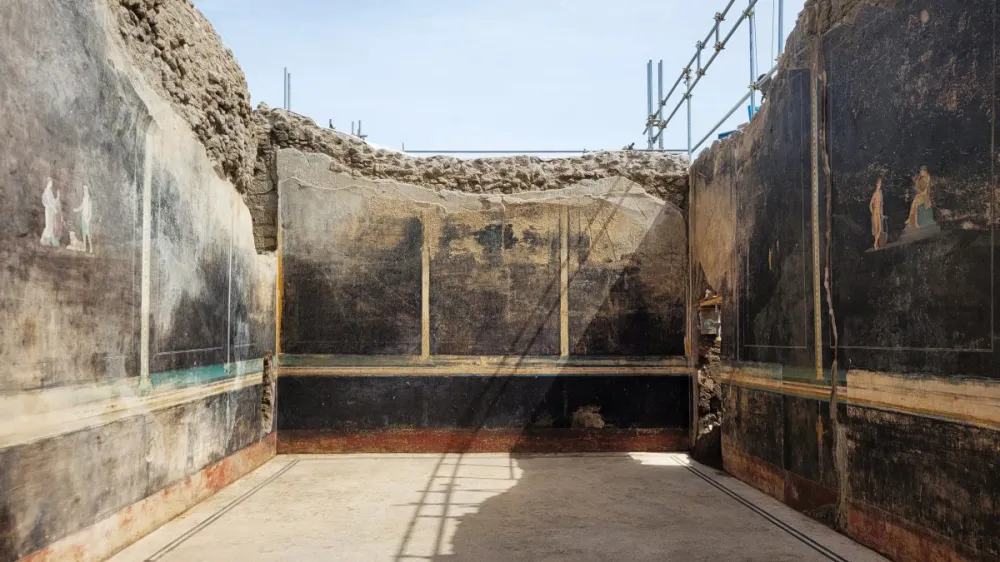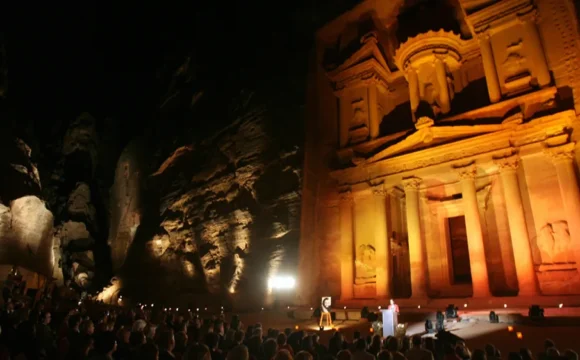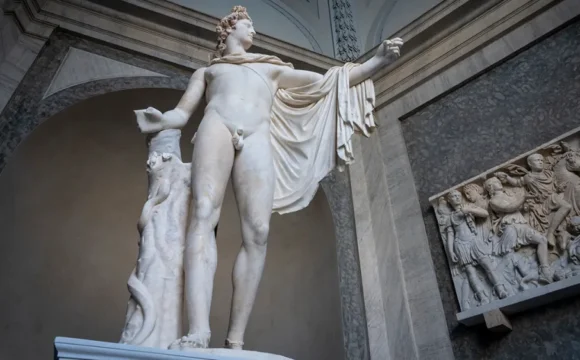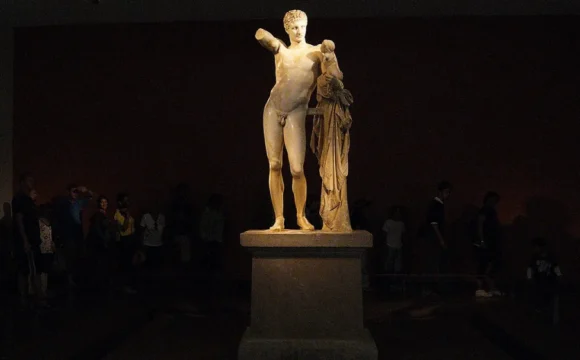การค้นพบภาพจิตรกรรมฝาผนังครั้งใหม่ในเมืองปอมเปอี ซึ่งมีภาพตัวละครเทพนิยายและฉากการสู้รบจากสงครามเมืองทรอย สะท้อนให้เห็นถึงความชื่นชอบศิลปะและเรื่องเล่าของชาวโรมันโบราณ ภาพจิตรกรรมเหล่านี้ ถูกค้นพบในห้องจัดเลี้ยง สถานที่ที่ผู้คนมาพบปะสังสรรค์ ช่วยให้เราสามารถมองเห็นวิถีชีวิตทางสังคมและวัฒนธรรมของเมืองปอมเปอี ก่อนที่จะเกิดเหตุการณ์ภูเขาไฟวิสุเวียสระเบิดในปี ค.ศ. 79
การขุดค้นทางโบราณคดีในเขตเรจิโอ IX ของเมืองปอมเปอี เผยโฉมห้องจัดเลี้ยงขนาดใหญ่ที่ได้รับการอนุรักษ์ไว้เป็นอย่างดี มีขนาดกว้าง 49 ฟุต ยาว 20 ฟุต เปิดโล่งไปสู่ลานภายใน พร้อมบันไดขึ้นชั้นสอง ภาพจิตรกรรมบนผนังสีดำของห้อง วาดขึ้นเพื่อกลบเขม่าจากตะเกียงน้ำมัน โดยมีภาพบุคคลสำคัญทางเทพนิยายปรากฎอยู่ เช่น เฮเลนแห่งทรอย ปารีส (ระบุชื่อตามภาษากรีกคือ อเล็กซานดรอส) คาสซานดรา และเทพเจ้าอพอลโล ภาพในตำนานเหล่านี้ มักปรากฏอยู่ตามบ้านเรือนของชาวโรมัน โดยเฉพาะอย่างยิ่งในห้องรับประทานอาหารและห้องนั่งเล่น ซึ่งเป็นสถานที่ที่แขกผู้มาเยือนสามารถพูดคุยกันเกี่ยวกับเรื่องราวในอดีต และความซับซ้อนของชีวิต
Gabriel Zuchtriegel ผู้อำนวยการสวนโบราณคดี เผยถึงประสบการณ์อันน่าประทับใจ เมื่อรับประทานอาหารภายในห้องดังกล่าว แสงไฟที่ส่องประกายจากตะเกียงน้ำมัน ทำให้ภาพบนผนังดูเหมือนเคลื่อนไหว โดยเฉพาะอย่างยิ่งหลังจากดื่มด่ำกับไวน์แคมปาเนีย
ความสำคัญของภาพจิตรกรรมฝาผนังเหล่านี้ มิได้อยู่เพียงแค่ความสวยงามทางศิลปะเท่านั้น แต่ยังสะท้อนถึงแก่นเรื่องสากล เช่น โชคชะตา ความรัก และความขัดแย้ง ซุคทรีเกล กล่าวว่า ภาพคู่รักในตำนานที่ปรากฎบนผนัง ทำหน้าที่เป็นจุดเริ่มต้นของบทสนทนา กระตุ้นให้เกิดการพูดคุยเกี่ยวกับความสัมพันธ์ระหว่างบุคคลกับโชคชะตา
การค้นพบครั้งนี้ ย้ำเตือนถึงเสน่ห์อันเป็นอมตะของศิลปะและการเล่าเรื่อง เผยให้เห็นว่าชาวโรมันโบราณในเมืองปอมเปอี ไม่ได้แตกต่างจากพวกเราในแง่ของการชื่นชมความงาม สัญลักษณ์ และบทสนทนาที่มีความหมายระหว่างการสังสรรค์ทางสังคม
จากบทความโดย Tori Latham
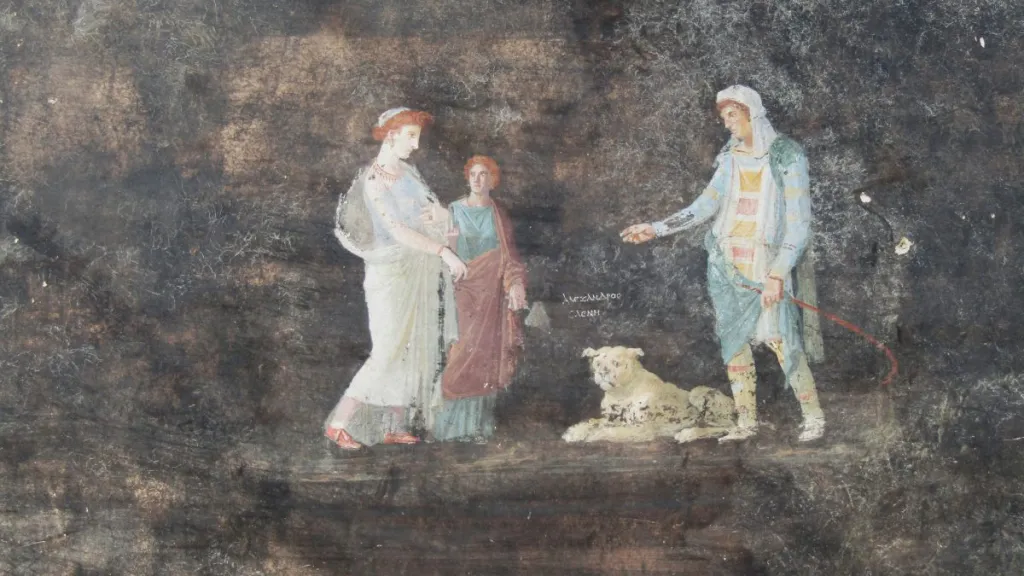
The recent discovery of frescoes in Pompeii, depicting mythological characters and scenes from the Trojan War, highlights the appreciation of art and storytelling among ancient Romans. These frescoes, found in a banquet room where people gathered for entertainment, offer a glimpse into the cultural and social life of Pompeii before the eruption of Mount Vesuvius in 79 A.D.
The excavation efforts in the Regio IX area of Pompeii unveiled the well-preserved banquet room, measuring 49 feet by 20 feet, which opened into a courtyard with a staircase to the first floor. The frescoes, painted on the room’s black walls to conceal smoke from oil lamps, depict figures such as Helen of Troy, Paris (identified by his Greek name, Alexandros), Cassandra, and the god Apollo. These mythological scenes were common in Roman homes, particularly in dining and living areas where guests could engage in conversations about the past and life’s complexities.
Gabriel Zuchtriegel, the director of the archaeological park, highlighted the immersive experience of dining in such rooms, where the flickering light of oil lamps would make the images appear to move, especially after enjoying Campanian wine.
The significance of these frescoes lies not only in their artistic beauty but also in their reflection of universal themes such as fate, love, and conflict. Zuchtriegel noted that the mythological couples depicted in the frescoes served as conversation starters, prompting discussions about the relationship between individuals and destiny.
Ultimately, this discovery underscores the timeless appeal of art and storytelling, revealing that the ancient Romans in Pompeii were not so different from us in their appreciation for beauty, symbolism, and meaningful conversation during social gatherings.
From the article by Tori Latham

